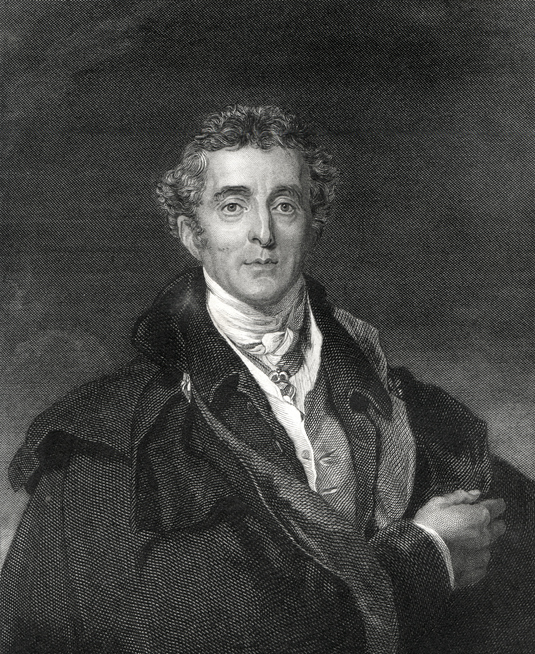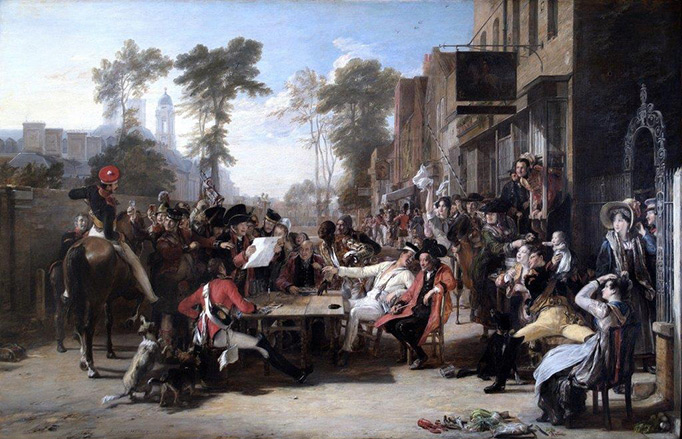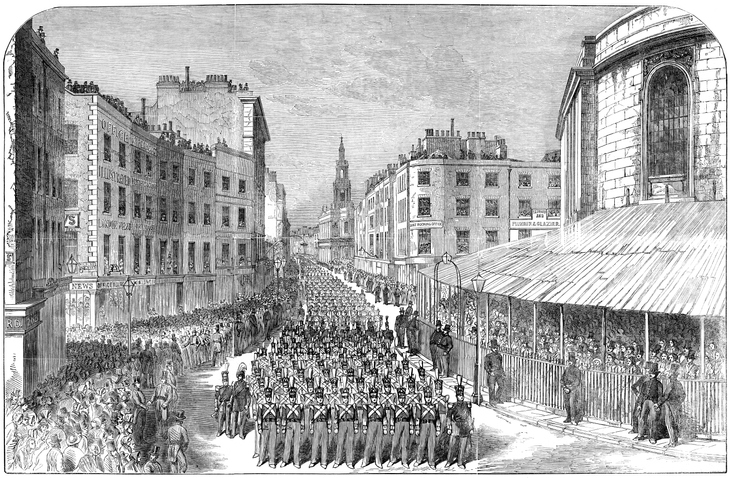This month in history: The funeral of the Duke of Wellington
Following his death at the age of 83, the Duke of Wellington was buried at St Paul's Cathedral on 18 November 1852. As part of our ‘This month in history’ series, we look back at the life and funeral of the Iron Duke, as described in supplements of The Gazette.

Who was the Duke of Wellington?
Arthur Wellesley, otherwise known as the 1st Duke of Wellington, was a leading British soldier and Conservative politician in 19th century Britain, who served as the Commander-in-Chief of the British Army (Gazette issue 18327) and twice as the prime minister of the United Kingdom.
According to most sources, Wellesley was born on 1 May 1769 into an aristocratic family in Dublin. He rose through the ranks of the British Army and came to prominence during the Napoleonic Wars at the start of the 19th century. During the Hundred Days War in 1815, Wellington commanded the allied army to defeat Napoleon at Waterloo.
Following his active military career, Wellington returned to politics where he became British prime minister in 1828. He returned to the role again for just under a month in 1834. Wellington was one of the leading figures in the House of Lords until his retirement and remained Commander-in-Chief until his death in 1852.
During his lifetime, Wellington was nicknamed the ‘Iron Duke’ and received numerous honours, titles and awards, including the Knight of the Order of the Garter (Gazette issue 16708) and the Knight Grand Cross of the Order of the Bath (Gazette issue 16972).
What was the Duke of Wellington’s role during the Battle of Waterloo?
The Duke of Wellington is perhaps best known for defeating Napoleon Bonaparte at the Battle of Waterloo in Belgium on Sunday 18 June 1815. A Gazette Extraordinary (Gazette issue 17028) was published on 22 June 1815 featuring the despatch from the victorious Duke which detailed the events of the battle against the French Army:
‘The enemy repeatedly attacked us with a large body of infantry and cavalry, supported by a numerous and powerful artillery, but all were repulsed in the steadiest manner’. Wellington gave mention to those who highly distinguished themselves, including the Duke of Brunswick, ‘who fell, fighting gallantly at the head of his troops’, and ‘Major-General Sir W. Ponsonby, having taken many prisoners, and an eagle’ (the French regimental eagle was a symbolic battle trophy).

According to Wellington’s despatch, there were numerous fatalities and injuries at Waterloo: ‘such advantages could not be gained without great loss and I am sorry to add, that ours has been immense.’ In total, 15,000 of Wellington’s army ended up dead or wounded, and up to 50,000 died on all sides. A list of notable losses is found at the end of the despatch.
The painting 'Chelsea pensioners reading the Gazette of the Battle of Waterloo' by Sir David Wilkie (pictured) was commissioned by the Duke of Wellington following the battle and depicts wounded, invalided and elderly soldiers celebrating British victory while reading The Gazette Extraordinary of 22 June.
How did the Duke of Wellington die?
The Duke of Wellington died around 3pm on 14 September 1852 at Walmer Castle in Deal, Kent. His death was recorded as being due to a stroke which resulted in a series of seizures.
Wellington’s body was taken by train to London on 10 November and laid in state at the Royal Hospital in Chelsea on arrival. Members of the royal family, including Queen Victoria, visited to pay their respects. According to reports at the time, when the public were allowed into the Royal Hospital without tickets, several people were killed in a crush trying to see the Duke.
On 16 November 1852, a supplement of The Gazette (Gazette issue 21381) announced that ‘All Peers intending to be present at the Solemnity of the Funeral of the late Duke of Wellington’ on Thursday 18 November 1852 ‘will find tickets prepared for them, and ready for delivery on application at this Office, any time to-morrow, between the hours of ten o'clock A. M. and five o'clock P. M.’ The tickets would be ‘required for their admission to St. Paul's.’
On 17 November, the Duke’s body was moved to Horse Guards. On 18 November 1852 he was given a state funeral on the Queen’s insistence. Wellington is one of only a handful of British subjects to be honoured with a state funeral, alongside the likes of Lord Nelson and Sir Winston Churchill.

When was the Duke of Wellington’s funeral?
The Duke of Wellington’s funeral took place at St Paul's Cathedral on 18 November 1852. It was described in detail in special supplement of The Gazette on 6 December of the same year (Gazette issue 21388).
Over a million people lined the streets of London to catch a glimpse of the funeral Procession which ‘moved off at eight o'clock precisely’. It consisted of 10,000 soldiers and made its way from ‘Constitution Hill, through Piccadilly, by St. James's Street, along Pall Mall, Cockspur Street, Charing Cross, and the Strand, to Temple Bar, and thence to the Cathedral Church of St. Paul.’
The six-wheeled funeral car arrived at the cathedral at 12.10pm, having taken just over four hours to complete the journey from Horse Guards. The burial service itself was also delayed by almost an hour due to a malfunction with the mechanism used to transfer the coffin from the funeral car to the bier at the cathedral’s west door.
At the end of the burial service, the Duke of Wellington’s coffin was lowered into the crypt of St Paul's Cathedral ‘amid the solemn strains of the Dead March’ by Handel. The coffin was placed next to Horatio Nelson’s, where it remains to this day. Wellington’s tomb is guarded by four lions.
Following the lowering of the coffin, Garter Principal King of Arms, Sir Charles George Young listed Wellington’s domestic and foreign titles and tributes, and finally Mendelssohn’s hymn ‘Sleepers Awake’ was sung as ‘the Guns at the Tower fired, and the Trumpets sounded a wail at the Western Entrance of the Cathedral’.
A bronze monument was sculpted by Alfred Stevens following Wellington’s death and features two groups of figures on the plinth; one of Valour crushing Cowardice and the other of Truth thrusting Falsehood aside. In 1892, the Wellington Monument was finally placed under one of the great arches to the north aisle of St Paul’s Cathedral.
See also
This month in history: The funeral of Lord Horatio Nelson
This month in history: Battle of Trafalgar
Images (in order of appearance):
Getty Images
© English Heritage
Getty Image
Publication date: 16 November 2020
Any opinion expressed in this article is that of the author and the author alone, and does not necessarily represent that of The Gazette.
